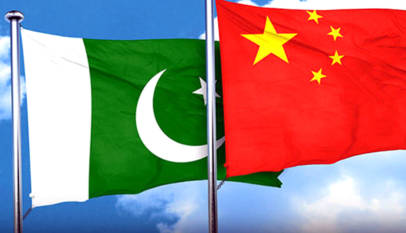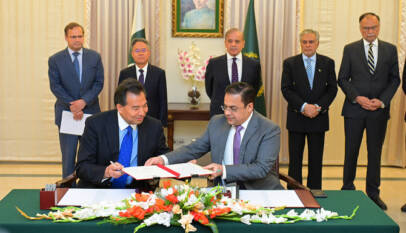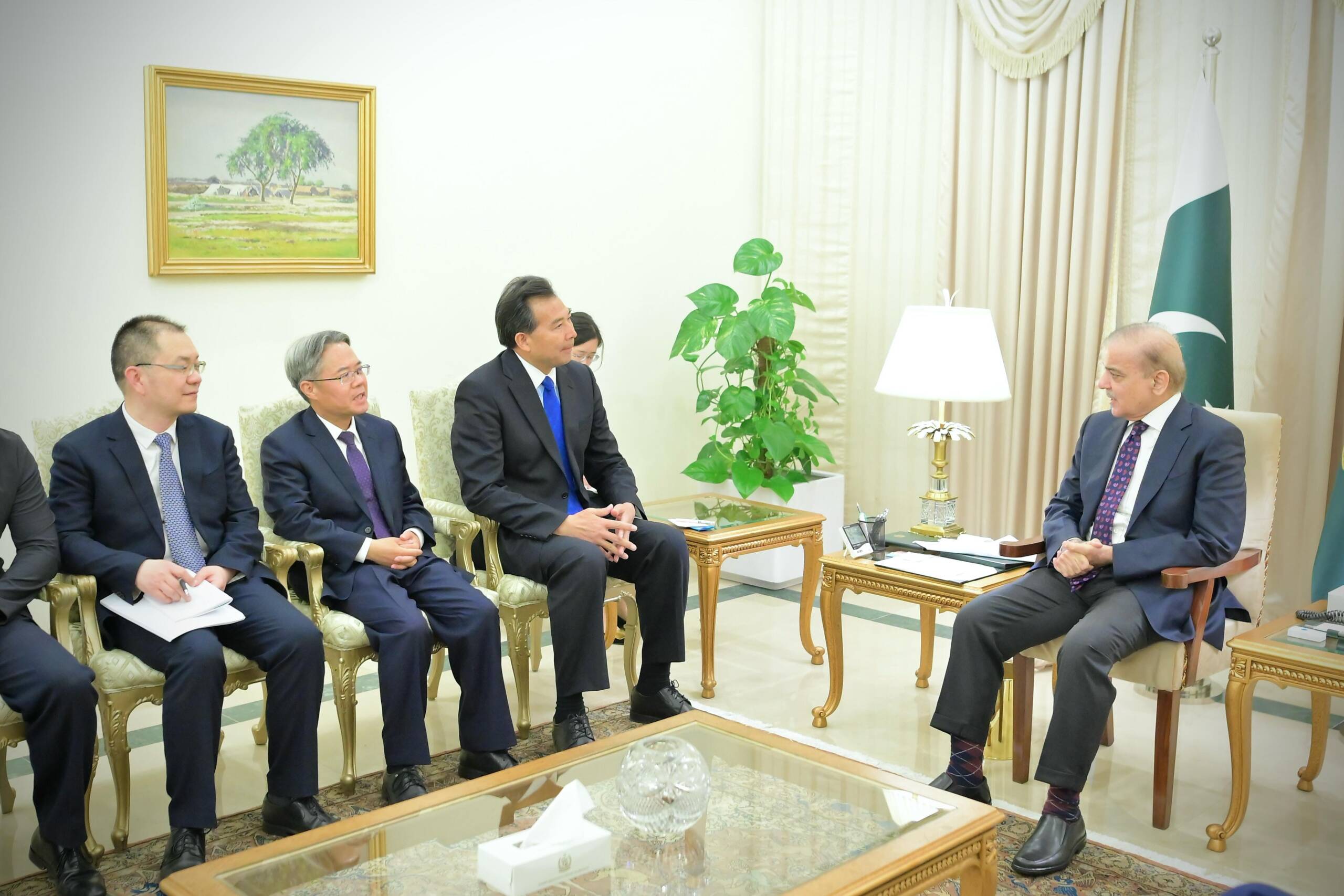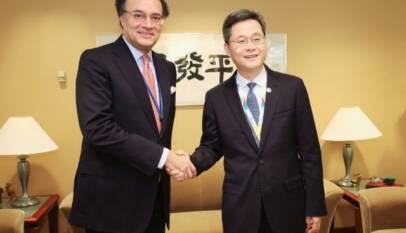CPEC is a Silver lining for Pakistan’s looming energy crisis
Against the backdrop of worsening power supply crisis with Pakistan facing a shortage of 5860 MW in 2013, China stepped in to invest in rejuvenating the energy infrastructure in Pakistan under CPEC. Coal power plant projects received criticism for lacking renewability potential by critics who failed to factor in Pakistan’s status of a developing country coupled with the job creation for locs. Also, a large portion of the energy portfolio of developed economies – 35.4% in case of Germany and 23.5% in the US – belongs to coal power itself. Moreover, a range of renewable energy projects in wind, solar and hydel energy such as Kohala and Azad Pattan render the whole assumption of CPEC power project’s negligence towards the environment as unwarranted.
ISLAMABAD:
The political economy influences decision-making, which undermines the performance of economy and results in politicising of the economic priorities.
Although all sectors of the economy are bearing the brunt of this situation, the energy sector has been impacted the most.
The story of politicising the energy sector started after a World Bank report in the 1960s, which emphasised the need for building dams including the Kalabagh dam well before the end of 1990s. It was deemed necessary to meet water and energy needs of the country.
Regrettably, Pakistan did not pay much attention, except for building a few small dams. A lack of seriousness resulted in load-shedding in the 1980s and the 1990s, which compelled Pakistan to look for immediate solutions.
The political economy again came into play and caused the wrong turn, and the state started to invest in fossil fuels. The Power Policy of 1994 provided an opportunity to the private sector to earn enormous profits in the most favourable conditions for investment.
As a result, Pakistan got entangled in problems like import of fossil fuels and ignorance of renewable energy, especially the hydroelectric power. The Alternative Energy Policy 2006 tried to make up for the loss but without much success.
Politics around the energy sector once again pushed Pakistan to an era of load-shedding in the late 2000s. The cost of load-shedding jumped, both at the societal and economic levels, at the beginning of the second decade of 21st Century.
In 2013, the supply of electricity stood at 14,835 megawatts against demand for 20,695MW. The annual cost was estimated at $4-5 billion on the economic front (Vision 2025).
The social cost was hidden as there was no mechanism in Pakistan to measure the psychological impact and its relevance for mental health.
Pakistan had no resources to combat the challenge and no country was ready to invest in this country due to terrorism. Pakistan was scrambling to find investment to overcome power blackouts.
Coming to rescue
In this situation, China put trust in Pakistan and began to invest in the energy sector. It took the risk against all odds to help Pakistan during those testing times.
In the meantime, many Chinese workers were targeted and some of them were killed. For private companies, it was risky to put resources in a terrorism-hit country, but Beijing and its companies continued to support Pakistan and introduced the China-Pakistan Economic Corridor (CPEC).
CPEC’s investment not only helped to manage load-shedding but it also contributed to job creation. It created about 23,000 jobs in different phases, especially in the most backward areas of Pakistan like Thar.
Thar, once the talking point of hunger and high children mortality rate due to malnutrition, is turning into an energy hub. Another success story in Thar is the inclusion of women in livelihood opportunities
This was not in the interest of the rivals of Pakistan and some international players. They launched a smear campaign against CPEC, more specifically against energy projects.
The favourite propaganda was against adverse impact of coal power plants, loans and corruption. First, they targeted the coal power plants, arguing that Pakistan was disturbing the global greenhouse gas (GHG) emissions balance through its investment in coal, which constituted only 13% of the energy mix.
Disappointingly, they still insist that Pakistan should immediately stop investing in coal without realising the need and poor development status of the country.
It seems foreign countries and companies are not interested in understanding the domestic dynamics. Thus, they are at the forefront of running a slanderous campaign against CPEC. They provide the required fuel to ignite the propaganda and spread it.
Critics of CPEC projects conveniently ignore two facts. First, they purposefully overlook or try to undermine the investment in renewables under the CPEC umbrella.
CPEC is building a good number of wind, solar and hydroelectric power projects and many of them are already operational. Hydroelectric power projects of 1,590 megawatts will start functioning in the next two years.
Kohala and Azad Pattan dams are other projects agreements for which have been signed only a few days ago.
Renewable sources
It is heartening to note that both China and Pakistan are working to find new opportunities of investment in hydroelectric power and other renewable energy projects.
Apart from energy, Pakistan is also heavily investing in tree plantation. The introduction of electric vehicle policy and support to the sector is another significant move to promote the green development agenda.
Simultaneously, Pakistan will retire 11,511MW of fossil fuel-based energy plants till 2047. It is more than the investment in coal-based energy, leave alone other investments in renewables, plantations, electric cars and other initiatives. These all actions will help to offset the GHG emissions.
Secondly, they forget to mention the consumption of coal-based electricity by the developed countries and regions like the US, EU and many others. For instance, the US – the most developed country – produces 23.5% of electricity from coal.
BBC reported in January 2020 that Germany produced 35.4% of its electricity from coal. Although it is planning to phase out coal energy but gradually and in a wise manner till 2038 by providing a hefty package of 40 billion euros.
In the EU, coal has a 14% share in electricity production. EU member states are now trying to phase out coal but it will take a long time. They can afford it as they have immensely benefited and earned the resources to do so. Though they can do it immediately as they have resources but still they are insisting on phasing out in a systematic manner. However, they pressurise Pakistan to do it immediately, which is odd.
Emerging economies are also following in the footsteps of developed countries. For example, India is producing 77% of electricity from coal and now PM Modi has announced the opening of new coalmines.
According to 2017 data, South Korea produced 44% of electricity from coal, South Africa 88% and Indonesia 58%. Russia, Japan and Turkey also feature among top 10 coal-based electricity producers.
Corruption allegations
Another point raised is corruption to malign CPEC. Unfortunately, the fuel to the campaign was provided by an incomplete assessment report, which was leaked by some vested interest groups.
Although rules and regulations based on which these projects were negotiated were already in place under the Power Policy 1994, still Chinese companies were being criticised. Chinese companies are availing facilities, which are already being offered in Pakistan.
Moreover, if there is any incident of corruption, Pakistan government should talk to the Chinese government directly. It would be more useful as Beijing has zero tolerance for corruption, which is clear from the anti-corruption campaign, led by President Xi Jinping. If any Chinese company is found to be involved in corruption, China will make an example out of it, for other companies.
To summarise, it is pertinent to mention that the smear campaign will continue as it is in the interest of opponents of CPEC. Pakistan and China should not be worried about it but they should put the right instruments in place to counter it like a well-designed engagement strategy.
The writer is the Director of Asia Study Centre, Sustainable Development Policy Institute
CPEC and Kazakhstan’s vital role in regional trade
The Republic of Kazakhstan has opened doors for the expansion of trade with Pakistan that …













